

Zitierweise / cite as:
Payer, Alois <1944 - >: Chronik Thailands = กาลานุกรมสยามประเทศไทย. -- Chronik 1879 (Rama V.). -- Fassung vom 2017-01-11. -- URL: http://www.payer.de/thailandchronik/chronik1879.htm
Erstmals publiziert: 2013-09-11
Überarbeitungen: 2017-01-10 [Ergänzungen] ; 2016-07-01 [Ergänzungen] ; 2015-10-05 [Ergänzungen] ; 2015-08-23 [Ergänzungen] ; 2015-05-20 [Ergänzungen] ; 2015-02-28 [Ergänzungen] ; 2014-12-17 [Ergänzungen] ; 2014-11-10 [Ergänzungen] ; 2014-02-27 [Ergänzungen] ; 2013-12-20 [Ergänzungen] ; 2013-10-04 [Ergänzungen] ; 2013-09-14 [Ergänzungen]
©opyright: Dieser Text steht der Allgemeinheit zur Verfügung. Eine Verwertung in Publikationen, die über übliche Zitate hinausgeht, bedarf der ausdrücklichen Genehmigung des Herausgebers.
Dieser Text ist Teil der Abteilung
Thailand von
Tüpfli's Global Village Library
ช้างตายทั้งตัวเอาใบบัวปิดไม่มิด
|
Gewidmet meiner lieben Frau Margarete Payer die seit unserem ersten Besuch in Thailand 1974 mit mir die Liebe zu den und die Sorge um die Bewohner Thailands teilt. |
|
Bei thailändischen Statistiken muss man mit allen Fehlerquellen rechnen, die in folgendem Werk beschrieben sind:
Die Statistikdiagramme geben also meistens eher qualitative als korrekte quantitative Beziehungen wieder.
|
Eine interessante Sammlung von Ansichtskarten aus Siam ca. 1880 bis 1930 ist:
Postcards of old Siam / Text by Bonnie Davis. -- Singapore : Times Editions, 1987. -- 95 S. : Ill. ; 22 x 28 cm. -- ISBN 9971-40-131-2
1879 - 1881
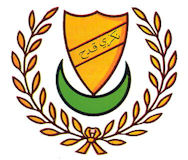
Sultan Zainal Rashid Mu'adzam Shah II (1857 - 1881) ist Sultan (سلطان) von Kedah (قدح)
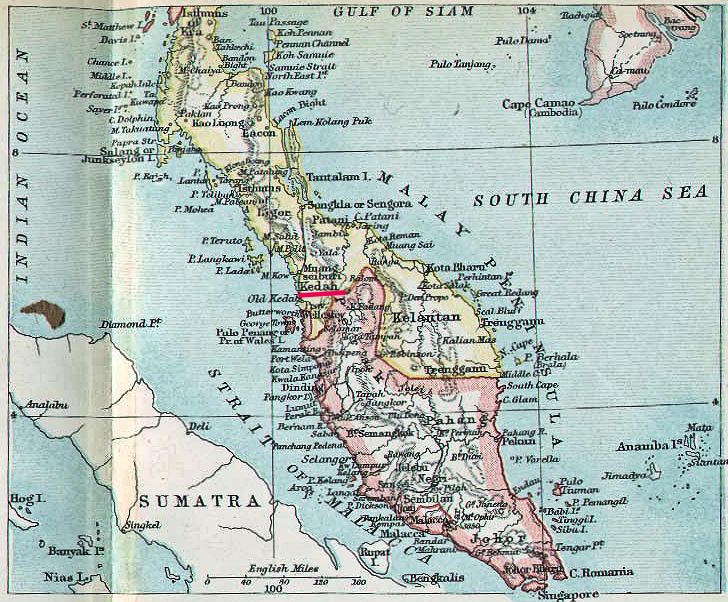
Abb.: Lage von Kedah (قدح)
[Bildquelle: Constables Hand Atlas of India, 1893. -- Pl. 59]
"Sultan Zainal Rashid Mu'adzam Shah II died at Ligor (ลิกอร์ = Nakhon Si Thammarat - ครศรีธรรม ราช) (4 September 1857 – 22 September 1881) was the 24th Sultan of Kedah from 1879 to 1881, a present Malaysian state. He was the son of Sultan Ahmad Tajuddin Mukarram Shah with Wan Tan binti Luang Nik Abidin. He married Tengku Mariam binti Tengku Ziauddin and had only a princess, Tunku Aishah. Tunku Aishah married the Sultan of Langkat, Sultan Abdul Aziz Abdul Djalil Rahmat Shah.
He was poisoned and died during detention at Ligor (Nakhon Si Thammarat) on 22 September 1881 and was succeeded by his half-brother, Sultan Abdul Hamid Halim Shah.
Full name and stylesHis full name and style was His Highness Paduka Sri Sultan Zainal Rashid Muazzam Shah II ibni al-Marhum Sultan Ahmad Tajuddin Mukarram Shah, Sultan and Yang di-Pertuan of the State of Kedah Dar ul-Aman."
[Quelle: http://en.wikipedia.org/wiki/Sultan_Zainal_Rashid_Mu%27adzam_Shah_II. -- Zugriff am 2015-092-28]
1879 - 1895

Französisch-imperialistische Erkundungsexpeditionen Missions Pavie:
Abb.: Auguste Pavie und Pierre Lefèvre-Pontalis mit kambodschanischen Dolmetschern, die an der École Coloniale in Paris ausgebildet worden waren, 1893
[Bildquelle: Wikipedia. -- Public domain]
"During his various missions, Auguste Pavie (1847 - 1925) managed to survey an area of 676,000 km2 (261,000 sq mi), travelling 30,000 km in the upland areas to the North and East of the Mekong, on foot, by elephant or down the river on rafts, gathering a large amount of scientific information. He was accompanied by a team of up to 40 assistants, with a wide range of expertise, from archaeology to entomology, some like diplomat-doctor Pierre Lefèvre-Pontalis (1864 - 1938) and the immunologist Alexandre Yersin (1863 - 1943) becoming famous in their own right. Many were trained at the École Cambodgienne in Paris, which Pavie helped found in 1885; it would later become the École Coloniale in 1889, and later still the present-day École Nationale de la France d'Outre-Mer. Pavie made a special effort to ensure that the École also trained indigenous assistants, personally accompanying the first Cambodian entrants to France. The original École Coloniale was located at 2 avenue de l'Observatoire, currently the Paris office of the École nationale d'administration.
- The first mission Pavie, from 1879 to 1885, covered the areas of Cambodia and Southern Siam as far as Bangkok.
- The second mission, from 1886 to 1889, covered Northeastern Laos and the exploration of the Black river in Tonkin as far as Hanoi.
- The third mission, from 1889 to 1891, involved the exploration of the Mekong river from Saigon to Luang Prabang.
- The fourth mission, from 1894 to 1895, involved the areas of Laos bordering with China and Burma on the left bank of the Mekong river, as far as the Red River."
[Quelle: http://en.wikipedia.org/wiki/Auguste_Pavie. -- Zugriff am 2013-09-14]
Abb.: Verlauf der Mission Pavie (rot) 1879 - 1895
[Bildquelle: Mission Pavie, Bd. 1, Pl. 1]
1879

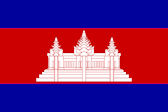
Zum "konsularischen Schutz" der während der Trockenzeit dort tätigen vietnamesischen Fischer, errichtet Frankreich in Kampong Chhnang (កំពង់ឆ្នាំង) einen kleinen Verwaltungsposten. In den folgenden zwei Jahren folgen
- Banam (in heutiger Provinz Prey Veng - ខេត្តព្រៃវែង)
- Koh Sutin
- Kratie (ក្រចេះ)
- Kampot (កំពត)
Abb.: Lage der genannten Orte
Bildquelel: CIA. -- Public domain]Am 1851-12-05 schreibt Julien-Auguste Fourès (1853 - 1915), Secrétaire général du protectorat au Cambodge, darüber an Ètienne Aymonier (1844 - 1929), Kolonialbeamter in Kambodscha:
"We’re installing a post in Kampot [កំពត], 20 soldiers and 50 tirailleurs, without informing the King; otherwise, where would be the thrill; tribunals and posts in Compong Chhnang [Kampong Chhnang - កំពង់ឆ្នាំង], Banam, Kasutin [Koh Sutin], Kraché [Kratie - ក្រចេះ]; a 2nd assistant is being nominated in Phnom Penh [ភ្នំពេញ].... The King is idiotic; he does not realize the state of affairs and still believes himself solid." [Übersetzung: Muller, Gregor [= Müller, Gregor] <1968 - >: Colonial Cambodia's 'bad Frenchmen' : the rise of French rule and the life of Thomas Caraman, 1840-87. -- London : Routledge, 2006. -- 294 S. : Ill. ; 23 cm. -- (Routledge studies in the modern history of Asia ; 37). -- ISBN 978-0-415-54553-2. -- S. 113]
1879

Außenminister Chao Phraya Bhaskarawongse (Phorn Bunnag) (เจ้าพระยาภาสกรวงศ์ (พร บุนนาค)) ( 1849 - 1920) kommt nach London, um den Konsularvertrag für Chiang Mai (เชียงใหม่) zu unterzeichnen.
Abb.: Chao Phraya Bhaskarawongse (Phorn Bunnag) (เจ้าพระยาภาสกรวงศ์ (พร บุนนาค))
[Bildquelle: Leslie Ward (1851 - 1922). -- In: Vanity Fair. -- 1879-09-13. -- Public domain]
1879

Der britische Generalkonsul Thomas George Knox (* Januar 1824; † 29. Juli 1887) muss aus Siam abgezogen werden, da seine Tochter Fanny Knox (1856 - 1925) den siamesischen Adligen Phra Pricha (พระปรีชากลการ aka. สำอาง อมาตยกุล, 1842 - 1879) heiratete ohne die dafür notwendige offizielle Genehmigung des Regenten zu haben. Phra Pricha wird 1879-11-24 auf Betreiben des Regenten Sri Suriyawongse (สมเด็จเจ้าพระยาบรมมหาศรีสุริยวงศ์, 1808 - 1883) hingerichtet.
Abb.: Phra Pricha
[Bildquelle: th.Wikipedia. -- Public domain]Die Romanze von Fanny Knox ist Gegenstand von:
Minney, R. J. (Rubeigh James) <1895-1979>: Fanny and the regent of Siam. -- London : Collins, 1962. -- 382 S. : Ill. ; 22cm.
Abb.: Umschlagtitel
Abb.: Einbandtitel einer Übersetzung ins ThaiFanny Knox macht 1884-06-12 bei der Gesandtschaft Siams in Paris ein Gesuch:
"According to Fanny [Fanny Knox, 1856-1925], before his death, Phra Preecha [พระปรีชากลการ, 1841 - 1879] had invested $38, 000 with Mssrs. Malherbe, Jullien & Co in Bangkok who spent part of it to run a rice mill. At first all was well and she received a sum of £500 regularly from them. Later however, payment was stopped. Fanny recounted the events in her petition as follows : "In March 1879, I, then Fanny Knox, married Phra Preecha Koulakam. On Thursday 26th March Phra Preecha was sent for to see the king; on entry (at the Palace) he was put into irons without the audience. On the day of my marriage, after the priests had left the house, Phra Preecha sent for all the keys of his possessions and gave them to me, Mr. Gould being present, and Mom Yesun being the person who brought the keys from Sanisaquin, Phra Preecha's only sister.
The property I had in my hands when my late husband was arrested was as follows :
- One share in my late husband s name in the rice mill of the firm Malherbe, Jullien & Co., value 100 catties [斤, 1 cattie = 0,6 kg].
- A receipt in the name of my late husband for $24,000 dollars lent by him to the firm Malherbe, Jullien & Co.
- A receipt in the name of my late husband for $ 14,400 dollars lent by him to the Patriew Company Mill [Petriu - แปดริ้ว = Chachoengsao - ฉะเชิงเทรา].
- A share in the Patriew Mill, value 150 catties, in the name of my late husband.
- A receipt signed by Nai Sin for Patriew Mill Company for 6286 ticals at 1 % per month, payable on demand, lent by my late husband.
- A receipt from Nai Sin, manager of the above mill for 8000 ticals, due to my late husband for rice supplied by him.
- A receipt from Chin Toh for 50 catties due to my late husband for money advanced by him to Chin Toh.
- A boxful of documents in the Siamese language, some of which I believe were mortgages on landed property in Siam.
During the imprisonment of Phra Preecha, I offered to give up the keys and all possessions to Phya Krasarb, Phra Nai Sri and Luang Pinit. They refused to accept the offer -- Mr Gould being witness to this act.
On the night of 26th November 1879, soldiers came to the house to confiscate all the property. I left the house ten minutes before the said occupation, not. wishing to receive the insults of the people.
When money was required for my passage to Europe, Mr. Sigg (of Malherbe, Jullien & Co) wrote to ask Mr. Read to give me all I required, as he would pay the sum from moneys in his hand, the interest at the rate of 2 salung to the catti of the sum of S 24, 000 dollars having not been paid since 1877. But on settling the account, I found that Mssrs. Malherbe, Jullien & Co, instead of paying Mr. Read with the balance of interest of 24, 000 dollars, had sold my late husband's share at their Rice Mill (see No. 1) and had bought it themselves without accounting for the interests during the two years. With the money for this share they paid Mr, Read and sent me the balance of £500. I never found out what this share was sold for although it was a paper-note share worth 100 catties.
In May 1879, Mr. Sigg [Henry Sigg ] asked me to give him the receipt (see No 3) for money lent by Phra Preecha as working capital of Patriew, which receipt Phra Preecha had given me. When I handed over the receipt of $14, 400 dollars, Mr. Sigg took it as his loan to Patriew Mill and gave me a receipt in my name from the firm of Malherbe, Jullien & Co as having received the said sum from me. In June 1881, Mr. Sigg proposed to Mr. Gould, my attorney, that I should give up this receipt of $14, 400 to him in return for a receipt in my own name for the sum of $24, 000 (see No. 2) which the firm of Malherbe, Jullien & Co. then, held in the name of Phra Preecha. Seeing that the sum of 24, 000 dollars was more than $14, 400, Mr. Gould accepted the transaction and gave up the $14, 400 for the receipt in my own name of $24, 000 which I now have in Europe and which I am willing to give to the Siamese Government as their legal property confiscated from Phra Preecha.To the best of my knowledge, the share in the Patriew Mill (see No. 4) was given to Malherbe, Jullien & Co by Mr. Gould. I do not know what has become of the receipt (see No. 6) which I gave to Mr. Sigg, and which I have asked him to collect for me. The receipt from Chin Toh (No. 7) was given by me to Mr. Gould, and as far as I know he has it. As for the box containing the mortgages (No. 8), I left it in Bangkok with my sister, Mrs. Leonowens [geb. Caroline Knox, 1856/57 - 1894, Frau von Louis T. Leonowens, 1856 - 1919], and she has it now.
In 1880, the Siamese Government asked Mssrs. Malherbe, Jullien & Co if they had any property of Phra Preecha for which they denied all knowledge and instead put in claims as creditors for merchandise supplied to Phra Preecha, and I believe the Siamese Government has paid the firm accordingly.
To my knowledge, there was a large quantity of rose-wood belonging to my late husband in the possession of Mssrs. Malherbe, Jullien & Co in their lower store. I do not know where all this went to. —Fanny Preecha Koulakam. Paris 12th June 1884. "
With her husband executed, Fanny fled to Singapore. Mr. Sigg sent her a message dated 19th November 1879 to say that
"The Siamese did not like much your rapid departure from here and far less that you should have taken the two children with you. As far as the rumours go, they wanted to have a word with you."
Sigg wrote several times to Fanny in order to keep her quiet about Phra Preecha's money in his Company and in order to find out where the latter's receipts were kept.
Eventually, Fanny went to live in France, followed by Sigg who came to Europe in 1883."
[Zitiert in: Manich Jumsai [มานิจ ชุมสาย] <1908 - 2009>: Prince Prisdang's files on his diplomatic activities in Europe, 1880-1886. -- Bangkok : Chalermnit, 1977. -- 267 S. : Ill. ; 19 cm. -- S. 238 - 243]
1879 - 1884

William Gifford Palgrave (1826–1888) ist britischer Generalkonsul in Bangkok. Dieser Posten ist eine Strafversetzung durch den britischen Ministerpräsidenten Benjamin Disraeli, 1. Earl of Beaconsfield (1804 - 1881). Palgrave spricht fließend Französisch, ist aber in Bangkok sehr unbeliebt.
Abb.: William Gifford Palgrave, 1868
[Quelle: Julia Margaret Cameron (1815–1879) / Wikimedia. -- Public domain]
"William Gifford Palgrave (* 1826 in Westminster, London, England; † 1888) war ein Orientreisender. Er war der Sohn von Sir Francis Palgrave (K.H., 1788 - 1861) und Elizabeth Turner. Er ging auf die Charterhouse School in Godalming, wo er neben anderen Ehrungen die Schulgoldmedaille für klassische Verse gewann. Danach besuchte er das Trinity College in Oxford, wofür er ein Stipendium erhalten hatte. Seinen Abschluss machte er dort im Jahr 1846.
Nach dem College begab sich Palgrave direkt nach Indien und diente für eine Zeit in der britischen Armee. Kurz darauf konvertierte er zum Katholizismus, wurde zum Priester geweiht und schloss sich dem Orden der Jesuiten an. Als Ordensmitglied diente er in Indien, Rom und in Syrien, wo er Kenntnisse der arabischen Sprache erwarb.
Palgrave überzeugte seine Vorgesetzten davon, eine Mission im inneren Arabien zu unterstützen, die in der Epoche für den Rest der Welt noch ein unbekanntes Land war. Er erlangte außerdem die Unterstützung des französischen Kaisers Napoleon III. (1808 - 1873) und legte ihm dar, dass ein besseres Wissen über Arabien dem französischen Imperialismus in Afrika und dem mittleren Osten dienlich sein würde.
Er kehrte dann nach Syrien zurück, wo er die Identität eines reisenden Arztes annahm.[1] Von einem Diener begleitet, packte Palgrave seine Taschen mit Medizin und Reisegütern und reiste in den Nadschd (نجد) im Nordzentrum Arabiens. Er reiste als Moslem getarnt, andernfalls hätte es den Tod in den Händen von Stammesangehörigen bedeuten können. Jeder Dienst, den er fortan für die Gesellschaft Jesu und das französische Kaiserreich tätigte, war als Spion, nicht als Missionar. Nach der einjährigen Reise von Syrien durch den Nadschd weiter nach Bahrain (البحرين)und Oman (عمان) kehrte er nach Europa zurück und schrieb eine Erzählung seiner Reisen. Seine Geschichte wurde ein Bestseller und wurde mehrfach nachgedruckt. Er gab keine Erwähnung von den versteckten Motiven für die Reise.
Nachdem Palgrave dieses Buch geschrieben hatte, vollzog er einen erneuten Seitenwechsel und sagte sich 1865 von der Katholischen Kirche los. Er trat in den Dienst des Foreign and Commonwealth Office und wurde 1866 zum Konsul in Sochumi (სოხუმი) ernannt, wechselte 1867 jedoch nach Trabzon (Τραπεζούντα). 1868 heiratete er Katherine, die Tochter des Norwegers George Edward Simpson, mit der er drei Söhne hatte. Er wurde 1873 zum Konsul auf Saint Thomas und Saint Croix ernannt, 1876 zum Konsul in Manila und 1878 zum Generalkonsul in Bulgarien. 1879 wurde er nach Bangkok versetzt. 1884 war er Ministerresident und Generalkonsul in Uruguay, wo er bis zu seinem Tod im Jahr 1888 diente.
Neben seiner Arbeit über Zentral-Arabien veröffentlichte Gifford Palgrave den Band Essays on Eastern Questions, eine Erzählung genannt Hermann Agha, eine Skizze von Niederländisch-Guayana und einen weiteren Essay-Band mit dem Titel Ulysses."
[Quelle: http://de.wikipedia.org/wiki/William_Gifford_Palgrave. -- Zugriff am 2014-12-07]
1879

Es erscheint:
จุลจอมเกล้าเจ้าอยู่หัว, พระบาทสมเด็จพระฯ [Chulalongkorn] <1853 - 1910>: ลิลิตนิทราชาคริต [Vom Schlaf erweckt - in Lilit-Versen]. -- 991 Verse. -- Eine Geschichte aus Tausendundeine Nacht ( ألف ليلة وليلة), die der König in englischer Übersetzung kennengelernt hat.
Abb.: Einbandtitel einer modernen Ausgabe
1879
Eröffnung des ersten Hotels in Siam, des Oriental Hotel.
Abb.: Lage des Oriental Hotel
[Bildquelle: OpenStreetMap. -- Creative Commons Lizenz (Namensnennung, share alike)]
Abb.: Oriental Hotel, Bangkok, Postkarte, Ende 19. Jhdt.
Abb.: Oriental Hotel, Bangkok, um 1908
[Bildquelle: Twentieth century impressions of Siam : its history, people, commerce, industries, and resources / ed. in chief: Arnold Wright. -- London [etc.] : Lloyds, 1908. -- S. 279]
"Das Hotel Oriental, eigentlich The Oriental, ist ein berühmtes Hotel der Luxuskategorie (5 Sterne) in Bangkok, Thailand. Das Hotel ist das „Flaggschiff“ der Hotelgruppe Mandarin Oriental. Geschichte
Die Geschichte des Hotels begann im Jahr 1876, als zwei dänische Kapitäne am Chao Phraya in Bangkok ein einfaches Gasthaus für Seeleute eröffneten. Das Gebäude wurde bei einem Brand zerstört und 1884 von einem anderen dänischen Kapitän neu aufgebaut. Dieser Bau steht noch heute und trägt den Namen Author's Wing (dt. Schriftsteller-Flügel), weil dort früher mehrere bekannte Schriftsteller logierten. Der erste war Josef Korzeniowski - später besser bekannt als Joseph Conrad - im Jahr 1888. Das Hotel gewann bald an Ansehen und wurde eine der „ersten Adressen“ in Bangkok. 1891 stieg hier zum Beispiel der spätere Zar Nikolaus II. ab. Weitere Schriftsteller, die sich in die Gästeliste eintrugen: Graham Greene, James Michener, John le Carré und Somerset Maugham.
Im Zweiten Weltkrieg wurde das Hotel beschädigt, als es von der japanischen Armee besetzt wurde. Nach dem Krieg war es dann für einige Zeit ein Quartier der Alliierten. 1945 übernahmen sechs Investoren das Hotel und sanierten es. 1958 wurde es um den Garden Wing (Gartenflügel) erweitert. Bis in die 1960er Jahre hinein konnte es jedoch nicht an seine frühere Glanzzeit anknüpfen. 1967 übernahm es dann der in Wangen im Allgäu geborene Deutsche Kurt Wachtveitl, der das Hotel 41 Jahre lang als Geschäftsführer leitete, und machte es erneut zu einem Luxushotel der Spitzenklasse. Am 31. Mai 2009 hat er die Leitung im Alter von 72 Jahren abgegeben.[1] Er hatte auf der Hotelfachschule in Lausanne eine Thailänderin kennengelernt, der er in ihre Heimat folgte und die seine Ehefrau wurde. Sein erstes Hotel war ein kleines Haus in Pattaya, danach übernahm er das Oriental. Wachtveitl galt lange als weltweit dienstältester Hotelmanager im selben Haus.
1974 wurde die Hotelgruppe Mandarin gegründet, die wenig später einen Anteil von 49 Prozent an dem Hotel erwarb. 1976 kam ein weiterer Flügel hinzu, der River Wing. 1991 ernannte das US-Magazin Institutional Investor das Oriental zum besten Hotel der Welt und erneuerte sein Urteil in den folgenden zehn Jahren. Auch in der Tourismusbranche genießt es einen ausgezeichneten Ruf. 2001 wurden rund 30 Millionen Dollar in die Sanierung des Hauses investiert.
Das Hotel hat 358 Zimmer und 35 Suiten, verfügt über neun Restaurants und ein eigenes Spa."
[Quelle: http://de.wikipedia.org/wiki/Hotel_Oriental. -- Zugriff am 2011-10-10]
1879
Entdeckung von Saphir-Vorkommen in den Provinzen Battambang (ក្រុងបាត់ដំបង) und Chanthaburi (จันทบุรี)
Abb.: Saphir-Mine, Thailand
[Bildquelle: Joethon / Wikimedia. -- Public domain
Abb.: Lage der Provinzen Battambang (ក្រុងបាត់ដំបង) und Chanthaburi (จันทบุรี)
[Bildquelle: CIA. -- Public domain]
"The year 1879 will be memorable in Siam for the discovery of valuable sapphire mines in the Battambong and Chantaboon districts. The news of the discoveries attracted great crowds of strangers, chiefly from Burmah, to work the mines. In the early days of the rush small fortunes were made by lucky prospectors. The British Consul-General in his report for 1880 tells a story of how a poorly clad and miserable-looking individual showed him at Bangkok a large sapphire in the rough which he valued at 20,000 rupees. He further relates the case of a man who dug out a stone which he offered for sale in Chantaboon at 1,000 rupees without finding a purchaser, and who, proceeding to Rangoon, was offered 15,000 rupees for the find. This tempting offer opened the man's eyes to the value of his possession, and taking the stone to Calcutta, he readily obtained there 30,000 rupees for it. The prosperity of the mines was only temporary. In 1880 the report made upon them was that they were almost wholly abandoned owing to the unhealthy character of the district and the lawlessness of its inhabitants." [Quelle: Arnold Wright in: Twentieth century impressions of Siam : its history, people, commerce, industries, and resources / ed. in chief: Arnold Wright. -- London [etc.] : Lloyds, 1908. -- S. 68.]
1879
Große Hochwasser. Dank der Kanäle (Khlong - คลอง) hält sich der Schaden in Grenzen.
1879

Abb.: Birmanische Kriegselefanten und Kavallerie
[Bildquelle: The Graphic <London>. -- 1979-10]
1879
Es erscheint:
Vaughan, J. D. (Jonas Daniel) <1825 - 1891>: The manners and customs of the Chinese of the Straits settlements. -- Singapore: Mission Press, 1879. -- 119 S. -- Es ist die bisher größte Darstellung von Auslandschinesen.
Abb.: Titelblatt
1879
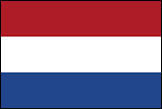
Der als Ingenieur ausgebildete Prinz Prisdang Jumsai (พระอง์คเจ้า ปฤษฎาง์ค ชุมสาย, 1851 - 1932) nimmt an den Planungen unter Ing. Cornelis Lely (1854 - 1929) zur Schließung der Zuiderzee durch einen Damm teil. Erst 1932 wird ein „Abschlussdeichs“ (Afsluitdijk) vollendet.
Abb.: Lage der Zuiderzee, 1658
[Bildquelle: Jan Janszoon (1588 - 1664) / Wikimedia. -- Public domain]
Abb.: Plan von Cornelis Lely (1854 - 1929) zur Abdämmung des IJsselmeer, 1891
1879
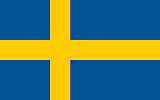
Indienstnahme des ersten Öltankschiffs der Welt, der "Zoroaster" ("Зороастр") des schwedischen Unternehmers Ludvig Nobel (1831 - 1888).
Abb.: "Zoroaster" ("Зороастр")
1879-01-02


Eröffnung der von dem US-Presbyterianer-Missionar Samuel Gamble McFarland (1830 - 1897) gegründeten Suan Anand [สวนนันท] Schule.
1879-04-09

Der ehemalige US-Präsident General Ulysses S. Grant (1822 - 1885) besucht auf seiner Weltreise sieben Tage lang Siam. Er ist Gast des Königs, wird von diesem empfangen, und erhält ein Staatsbankett zu seinen Ehren.
Abb.: "Cartoon showing Ulysses S. Grant, as an acrobat, on trapeze "third term," holding on to "whiskey ring" and "Navy ring," with strap "corruption" in his mouth, holding up other acrobats, Shepard, George M. Robeson, William W. Belknap, Murphy, Williams, and Orville E. Babcock." / von Joseph Ferdinand Keppler (1838 - 1894)
[Bildquelle: Puck. -- 1880-02-04 / LoC. -- Public domain]
Abb.: Empfang von Ulysses S. Grant durch den König
Abb.: Das Schiff, Empfang in Shanghai
[a.u.a.O., nach S. 232]Das Programm, das General Ulysses S. Grant in Siam absolvierte ist ausführlich wiedergegeben in:
Remlap, L. T. [= Palmer, L. T. (Loomis T.)] <1844 - >: General U.S. Grant's tour around the world, embracing his speeches, receptions, and description of his travels. With a biographical sketch of his life. -- Chicago : Fairbanks, 1879. -- 350 S. : Ill. ; 23 cm. -- S. 200 - 219
Abb.: Route von General Grant's Weltreise
[a.a.O., nach S. 8]
1879-05-01

Siamesische Gesandtschaft nach London.
1879-07-07

Charles Marie Le Myre de Vilers (1833 - 1918) wird der erste zivile Gouverneur von Cochinchina.
Abb.: Charles Marie Le Myre de Vilers, 1884
[Bildquelle: Wikimedia. -- Public domain]
1879-08-14

The New York Times: "A Normal College opened in Bangkok on The New-York Plan":
| "Some time in the Spring of 1878 an article, with
illustrations, was published in the Harper's Monthly Magazine, upon the
educational system of this city, and more particularly the Normal
College. In due course of time the magazine fell into the hands of the
King of Siam, and so much interested was he in the article in question,
that he caused the Rev. Samuel G. McFarland, a Presbyterian missionary
to Siam, who he had appointed Superintendent of Education for his
Kingdom, to write to Mr. Wood, President of the Board of Education of
this City, for further details in regard to the college, stating that
the King of Siam had resolved to civilize his people upon the same plan
as that adopted by the Emperor of China, by educating them. Mr. McFarland enclosed a check for $20, with a request that the money be invested in educational books and the books forwarded to Siam. Mr. Hood procured the books and sent them, and the check also, to the Rev. McFarland. The books arrived in course of time, and were duly presented to his Majesty. Mr. Wood received a letter from the brother and acting private secretary of the King, acknowledging receipt of the books and thanking the authors in the King's name. The letter from the King's private secretary is written on a large sheet of unruled white paper, and is surrounded by a heavy black border, in token of the deep grief of his Majesty over the death of a royal half-brother, which occurred a few days before the letter was written. The letter of the Rev. McFarland states that a normal college has been opened in Bangkok, on the plan of one existing here; that they made arrangements for the accommodation of 80 pupils, but that about 130 had presented themselves, among whom 12 were princes of the realm and that the prospects of the success of the college were very encouraging." [Abgedruckt in: Burslem, Chris: Tales of old Bangkok. -- Hong Kong : Earnshaw, 2012. -- ISBN 13-978-988-19984-2-2. -- S. 76] |
| "A normal school
is a school created to train high school graduates to be teachers. Its
purpose is to establish teaching standards or norms, hence its
name. Most such schools are now called teachers' colleges;
however, in some places the term normal school
is still used." [Quelle: http://en.wikipedia.org/wiki/Normal_college. -- Zugriff am 2013-02-05] |
1879-08-30 - 1879-10-06
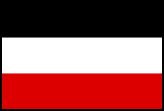
Der deutsche Fotograf Gustav Richard Lambert (1846 - 1907), Inhaber des Fotostudios G.R. Lambert and Co., weilt in Siam.
"Gustav(e) Richard Lambert (* 17. Februar 1846 in Berlin[1]; † 23. Mai 1907 in Radebeul; auch Richard Lambert) war ein Fotograf in Singapur (Gründer von G. R. Lambert & Co.) und in Dresden. In Fernost als Hoffotograf des Königs von Siam diplomiert, wurde er auch zu seiner späteren Dresdner Zeit im Adreßbuch der Hoflieferanten im Königreich Sachsen als solcher geführt.[2] Leben und Wirken
Lambert traf nach einer Quelle 1875 in Singapur ein,[3] wo er im selben Jahr das Fotostudio G. R. Lambert & Co. dort in der Orchard Road eröffnete.[4] Nach einer Unternehmensanzeige von 1917 soll es Lamberts Atelier jedoch schon seit 1872 gegeben haben.[5] Lambert war verwandt mit der Familie Lambert, die zu jener Zeit die Singapore Carriage Works and Livery Stables betrieben.
Die National Gallery of Australia gibt etwas andere Lebensdaten an: Aufenthalt in Singapur 1867–70, Holland 1870–77, Singapur 1877–80, Holland 1880–82, Singapur 1882–86 und Deutschland von um 1886 bis zu seinem Tod 1907. Nach jenen Angaben wurde Lambert 1886 in Singapur naturalisiert.[6] Sein Singapurer Fotoatelier gründete Lambert am 10. April 1867 in der High Street Nr. 1.[7]
Lambert war mit Neeltje Lucretia Coenradina geb. Groeneveld (* 23. Februar 1850 in Woerden; † 10. Oktober 1923 in Radebeul) verheiratet und hatte mit ihr zwei Töchter und einen Sohn (Fritz Lambert). Privat wohnte Lambert zuletzt in der heute denkmalgeschützten Villa Hölderlinstraße 4 im Dresdner Vorort Radebeul, wo später sein Sohn als Psychotherapeut wirkte.
Lambert wurde auf dem Friedhof Radebeul-Ost beerdigt, ebenso wie später seine Ehefrau.[1]
G. R. Lambert & Co. in FernostLamberts Fotoatelier schaltete ab 1878 im Singapore directory for the Straits Settlements Werbung für den Standort Orchard Road. 1885 oder 1886 übergab Lambert die Unternehmensführung in Singapur an seinen Partner Alexander Koch und verließ die Straits Settlements, um nach Deutschland zurückzugehen. Die nächsten zwanzig Jahre, bis 1905, führte Koch die Geschäfte. In den 1890er Jahren lag der Unternehmensmittelpunkt im Gresham House in der Battery Road, dort wo heute das Straits Trading Building steht. Ab 1905 führte der von Reutlinger in Paris gekommene H. Thomas Jensen die Geschäfte. Im August 1914, mit Beginn des Ersten Weltkriegs, übernahm der aus London von Lafayette gekommene Brite H. Nugent Buckeridge (Geschlecht unbekannt)[8] als Fotograf die Leitung des Ateliers in der Orchard Road.[9]
Die Niederlassung im Sultanat Deli auf Sumatra wurde Mitte der 1880er Jahre durch H. Stafhell geführt, zudem gab es eine Niederlassung in Kuala Lumpur. Das Bangkok-Atelier wurde um 1895 von C. Frichas betrieben, ein weiteres gab es auf Borneo. Mit diesen zahlreichen Niederlassungen war Lambert & Co. das größte Fotoatelier auf der Malaiischen Halbinsel. An die 3000 Aufnahmen des Fernen Ostens aus der Zeit vor und nach jener Jahrhundertwende, von Porträts bis hin zu Landschaften, entstanden durch die Arbeit der Lambert-Fotografen.
G.R. Lambert and Co. waren Hoffotografen des Königs von Siam, Chulalongkorn, und des Sultans von Johor. Bekannte Aufnahmen stammen auch von den Federal Conferences in den Jahren 1896 und 1903 und von dem Besuch des Gouverneurs Sir John Anderson in Kelantan im Jahr 1909.
Lambert bzw. seine fernöstlichen Fotoateliers beschäftigten zahlreiche, oft auch deutsche, Fotografen, darunter
- 1885: C. Petersen, H. Schübert, Miss Besagoiti, T. A. (oder J. A.) Rodrigues
- 1901: R. Herbst, H. V. Katte, C. Warleberg, A. Beattie
- 1910: O. Schwemer (Atelierleiter), H. L. Coghlan, W. Ewald, S. Gauder, R. Matsunaga
In Folge des Ersten Weltkriegs wurde das deutsche Unternehmen, das bis zum Ende unter dem Namen des 1907 verstorbenen Lambert geführt wurde, 1919 aufgelöst.[10] Seine möglicherweise direkte Nachfolge trat das von etwa 1920 bis um 1929 aktive Fotostudio Empire Studio Ltd. an.[11]
Lamberts Atelier in DresdenLamberts sächsisches Atelier lag in der Dresdner Seestraße 21.[12] Es gehörte zu den in Sachsen akkreditierten Hoflieferanten.[13] Als Nachfolger seines Vaters wurde Sohn Fritz 1907, unter dem Namen Luis Frederic Lambert, ebenfalls als Hoffotograf mit der Adresse Seestraße 21 geführt.[14] 1909 hatte Lambert das Atelier Seestraße aufgegeben und wohnte als Fotograf L. Friedrich Lambert auf der Bürgerwiese.[15]
Rezeption„Lambert has maintained a high reputation for artistic portraiture, and of landscapes they have one of the finest collections in the east, comprising about three thousand subjects relating to Siam, Singapore, Borneo, Malaya and China. An extensive trade is done in picture postcards, the turnover being about quarter of a million cards a year. A large stock of apparatus for amateurs is always kept in hand.“[16]
Im Jahr 2010
fand im Philatelic Museum of Singapore unter dem Titel The Originals of G.R. Lambert eine Ausstellung mit Werken von Lambert statt. Würdigungsgrund: „Die frühe Fotografie in Singapur wurde durch einen Deutschen geprägt: G.R. Lambert.“[4]
[Quelle: https://de.wikipedia.org/wiki/Gustav_Richard_Lambert. -- Zugriff am 2017-01-11]
1879-11 - 1882

Mönchs-Prinz Vajirañāṇavarorasa (วชิรญาณวโรรส, 1880 - 1921) lebt im Wat Makut Kasattriyaram Ratchaworawihan (วัดมกุฏกษัตริยารามราชวรวิหาร) wegen der strikten Mönchsdisziplin unter dem Abt Phra Candragocaraguna (Yim Candraramsi) [พระจันทรโคจรคุณ (ยิ้ม จนฺทรํสี), 1809 -1882)].
Abb.: Phra Candragocaraguna (Yim Candraramsi) [พระจันทรโคจรคุณ (ยิ้ม จนฺทรํสี)]
1879-11-13
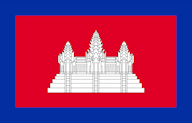

Der französische Gouverneur von Indochina, Charles LeMyre de Vilers (1833-1918) berichtet dem französischen Kolonialministerium, dass sich König Norodom I (ព្រះបាទនរោត្តម) von Kambodscha (1834 – 1904) beklagt hat, dass beim König von Siam eine ganzer Hofstatt von ausländischen Diplometen (Konsuln) ist, während bei ihm nur der Repräsentant Frankreichs ist.
Abb.: König Norodom I (ព្រះបាទនរោត្តម) von Kambodscha
1879-11-26

Zum Fall von Phra Pricha (พระปรีชากลการ aka. สำอาง อมาตยกุล, 1842 - 1879), der Fanny Knox (1856 - 1925) geheiratet hatte, und hingerichtet wurde schreibt Außenminister Chao Phraya Bhanuwongse Maha Kosathibodi (Tuam Bunnag) (เจ้าพระยาภาณุวงศ์มหาโกษาธิบดี - ท้วม บุนนาค, 1830 - 1913) an Siams Konsul in London, D. K. Mason, damit dieser die britische Regierung informiere:
"The three serious charges of murder brought against Phra Pree Cha [พระปรีชากลการ aka. สำอาง อมาตยกุล, 1842 - 1879] which the judges have examined and found to be true, the High Judges of the King's bench have consulted the laws and stated that considering that Phra Pree Cha being the governor of the province has dared to act abusively destroying the people's lives in such way, he must also be killed in the same way, the proper authority therefore took him over to Prachin [ปราจีนบุรี] and executed him there in accordance with the laws on the 24th instant, he was executed at Prachin because it has been the custom heretofore if anyone should abuse the people taking their lives in any province or village, the criminal must also be executed in the locality where the crime was committed so as the people may all see it. "The money which Phra Pree Cha frauded, the judges have examined and found that he took 15, 500 catties [斤]and the accounts which they could get only shows the sum he expended for the workmen and articles bought from the time he commenced to work the mine until now, amount to over 4, 000 catties, the 15, 500 catties which he drew from the proper authority after deducting the expenditure made by Phra Pree Cha it leaves yet a balance on hands of Phra Pree Cha amounting to over 10, 000 catties, he could not produce any account of bills and he requested the confiscation of all his property or goods to meet the payment of the deficit.
"The working of the gold mine of Prachin from the first, His Majesty the King of Siam and the Senabodee [เสนาบดี] (Council of Ministers) did not send Phra Pree Cha to superintend the work. His Majesty and the Senabodee gave the working of the mine over to the charge of Phya Krasap [พระยากระสาปนกิจโกศล, 1819/20 - 1896] to work the mine. Phya Krasap did not go himself and entrusted the working to Phra Pree Cha his son to work in place of him. Phra Pree Cha acted so badly and contrary to the laws of the country besides defrauding at large the property of the State in such a manner.
"Phya Krasap being the father and also the person who sent his son Phra Pree Cha in place of him, and he did not take care to see the working and allowed his son to commit the fraud in that way, the judges consulted the laws and decided that Phya Krasap had also known and seen it because it was his business and did not take care and attend to it and the other things Phya Krasap and Phra Nai See and Luang Pinit all three being the persons who drew money from the proper authority to take over to Phra Pree Cha, the judges therefore decided according to the laws, that Phya Krasap the father, and Phra Nai See and Luang Pinit the sons who drew money for Phra Pree Cha all three of them were aware of the doings of Phra Pree Cha, so all three of them must be punished. Now, Phya Krasap, Phra Nai See and Luang Pinit have been imprisoned pending further examination of the accounts of money which they have defrauded.
"Whatever will be the result of the further examination of the accounts of money they have defrauded I will inform you afterwards."Please be careful to hear what the people have to say in this matter so that in case of any persons criticising the Siamese government for having punished these people in excess, please answer them that the Siamese government wish to enforce the laws for the protection of peace in the country and does not wish that any one should imitate them.
"In the matter of their punishing, the government of Siam wish not to be cruel because it has seen and heard of some experience in the world. It could not help it because it was for the protection of the peace in the country therefore the full law was enforced. "
[Zitiert in: Manich Jumsai [มานิจ ชุมสาย] <1908 - 2009>: History of Anglo-Thai relations. -- 6. ed. -- Bangkok : Chalermnit, 2000. -- 494 S. : Ill. ; 21 cm. -- S. 180ff.]
1879-12 - 1890

Es erscheint die offizielle Zeitschrift der Regierung von Französisch Cochinchina:
Excursions et reconnaissances : Indochine française. - Saigon : Imprimerie du Goubvernement. -- 1.1879/80 - 15.1890 = Nr. 1-33
Abb.: Titelblatt von Nr. 1 (1879-12)
ausführlich: http://www.payer.de/thailandchronik/ressourcen.htm
Phongpaichit, Pasuk <ผาสุก พงษ์ไพจิตร, 1946 - > ; Baker, Chris <1948 - >: Thailand : economy and politics. -- Selangor : Oxford Univ. Pr., 1995. -- 449 S. ; 23 cm. -- ISBN 983-56-0024-4. -- Beste Geschichte des modernen Thailand.
Ingram, James C.: Economic change in Thailand 1850 - 1870. -- Stanford : Stanford Univ. Pr., 1971. -- 352 S. ; 23 cm. -- "A new edition of Economic change in Thailand since 1850 with two new chapters on developments since 1950". -- Grundlegend.
Akira, Suehiro [末廣昭] <1951 - >: Capital accumulation in Thailand 1855 - 1985. -- Tokyo : Centre for East Asian Cultural Studies, ©1989. -- 427 S. ; 23 cm. -- ISBN 4896561058. -- Grundlegend.
Skinner, William <1925 - 2008>: Chinese society in Thailand : an analytical history. -- Ithaca, NY : Cornell Univ. Press, 1957. -- 459 S. ; 24 cm. -- Grundlegend.
Mitchell, B. R. (Brian R.): International historical statistics : Africa and Asia. -- London : Macmillan, 1982. -- 761 S. ; 28 cm. -- ISBN 0-333-3163-0
Smyth, H. Warington (Herbert Warington) <1867-1943>: Five years in Siam : from 1891 to 1896. -- London : Murray, 1898. -- 2 Bde. : Ill ; cm.
ศกดา ศิริพันธุ์ = Sakda Siripant: พระบาทสมเด็จพระจุลจอมเกล้าเจ้าอยู่หัว พระบิดาแห่งการถ่ายภาพไทย = H.M. King Chulalongkorn : the father of Thai photography. -- กรุงเทพๆ : ด่านสุทธา, 2555 = 2012. -- 354 S. : Ill. ; 30 cm. -- ISBN 978-616-305-569-9